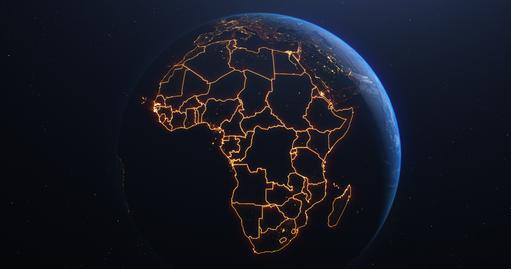|
Data Privacy and Security Concerns
Data privacy and security are concerns in China. Entrants must navigate stringent data protection regulations, which may differ significantly from Western standards. Building trust with healthcare providers and patients is essential to address these concerns. Failure to do so can lead to regulatory issues, damage brand reputation, and erode customer trust.
Reassessing global strategies amid China's economic slowdown
China, as the world's second-largest economy, has been a pivotal market for major Western MedTech companies. However, the current economic climate calls for a strategic re-evaluation. China's economy has recently experienced a slowdown, with repercussions felt not only in neighbouring nations but also globally. South Korea, a historical driver of global growth, faces its longest factory activity decline in nearly two decades. Other major Asian exporters are also dealing with sluggish demand, and Japan's manufacturing activity has declined, with Taiwan reporting contracting output and weakened foreign demand. In September 2023, concerns grew as China experienced deflation, raising questions about currency stability, challenges in the property sector, and high local government debt. China's decision to not stimulate its economy further exacerbated the situation, impacting key financial hubs like Hong Kong and Singapore, as well as satellite economies. This economic slowdown in China is expected to persist and likely have far-reaching global consequences. Businesses worldwide, including those in the US and Europe, heavily reliant on China for growth, should explore alternative regions for sustainable value and expansion. Western MedTech companies need to carefully assess the challenges and costs associated with further expansion in China.
An alternative strategy emerges; companies should consider complementing their Asian focus and explore the growing economies of Africa. Just as early MedTech pioneers capitalized on Asia's rapid expansion, companies today should contemplate laying the groundwork for a fresh international strategy in Africa. The continent has potential, and a proactive approach could yield sustainable growth opportunities, helping to mitigate the impact of China's economic challenges and slowdown on global ambitions.
Part 2
Africa's Ascendance
With a few notable exceptions, Western MedTech executives tend to overlook Africa due to its challenging socio-economic conditions, which include political instability, corruption, extreme poverty affecting ~50% of the population, limited access to necessities, and a high illiteracy rate of ~40%. Notwithstanding, China has long recognized Africa's potential, which mainly revolves around Africa's abundant natural resources, which constitute ~30% of the world's mineral reserves, including critical resources for renewable and low-carbon technologies. For instance, Zambia leads in unrefined copper exports, Guinea boasts the world's largest bauxite reserves, and South Africa contributes ~90% of the world’s platinum group metal reserves. Furthermore, Africa has the world's youngest population, with substantial projected growth.
Asia plays a pivotal role in Africa's trade dynamics, accounting for >42% of its exports and >45% of its imports, surpassing Europe in both cases. According to a 2023, Business Insider Report, Africa is poised to become the world's fastest-growing region, with six of the ten fastest-growing economies located on the continent, albeit starting from a relatively low economic base. In addition to its mineral wealth, the continent's path to economic success is partly based on developing an export-led manufacturing economy, akin to China's transformation in the 1980s. This, already in progress, has the potential to lift >0.5bn people out of poverty, create >100m jobs, and establish a substantial and rapidly growing middleclass that will demand improved services, including healthcare.
Currently, Africa's manufacturing sector contributes only ~9% to the continent's gross domestic product (GDP) and ~2% to global manufacturing output. However, the African Union has placed manufacturing at the forefront of its Agenda 2063, a strategic framework supported by all 55 African countries, aimed at achieving socio-economic transformation over the next 50 years. This commitment gains significance amid escalating trade tensions between the US and China, which have global economic implications. Africa has weathered recent shocks, including weakened external demand, global inflation, higher borrowing costs, and adverse weather events, which have hindered its post-pandemic recovery. Nonetheless, in the coming decades, the "Made in Africa" label may come to symbolize quality products, solidifying the continent's position as a prominent player in global manufacturing, akin to how "Made in China" became synonymous with quality two decades ago.
China’s impact on African manufacturing
China has been instrumental in the economic transformation of African nations, which partly stems from the Chinese strategy to relocate its low-level manufacturing operations to Africa. As China's domestic manufacturers have advanced technically, they have systematically shifted their basic manufacturing capabilities to African countries. This provides Africa with an opportunity to mirror China's journey from standard manufacturing to advanced production processes over several decades.
Chinese companies have made substantial investments in labour-intensive manufacturing facilities notably in Ethiopia. This has created jobs and fueled the growth of local manufacturing sectors. For instance, the Huajian Group, a leading Chinese footwear manufacturer, established plants in Ethiopia in 2012, employing >7,000 people and producing ~5m shoes annually. The Group’s partner in this project is the China-Africa Development Fund (CADFund), a private equity facility promoting Chinese investment in the continent. Huajian also invested in Ethiopia's Jimma industrial park, contributing US$100m to build shoe and coffee processing plants and a technical education centre.
As Chinese enterprises expanded in Africa, they provided training to local workforces, and transferred their manufacturing expertise. This collaborative effort is helping to develop a skilled labour pool important for sustaining manufacturing growth. Notably, Ethiopia's Eastern Industrial Zone, supported by Chinese investment, evolved into a thriving manufacturing hub, attracting both domestic and foreign investors. Additionally, Beijing's Belt and Road Initiative has led to significant infrastructure developments across Africa, including roads and ports, which further stimulate the continent's manufacturing sector. China’s investment in Africa stands out due to its tangible presence, in contrast to other nations whose involvement in the continent is characterized by distant and arms-length financial engagements. With the influx of such investments, technology transfers, and ongoing skill development, some African nations are positioned to follow China's path towards a manufacturing transformation.
MedTech’s early entrants to the African market
For years, support for Africa’s healthcare tended to concentrate on education and malaria nets. In recent years however, as developed-world disorders, like cancer and heart disease, grew in Africa so medical technology companies increasingly found a market in supplying devices to private healthcare operators and investing in healthcare initiatives through partnerships with governments. US President George W. Bush recognised Africa’s strategic importance, emphasising investments for development and health initiatives, including the President’s Emergency Plan for AIDS Relief (PEPFAR), which, announced in 2003, reflected a commitment to fostering stability and wellbeing on the continent. Since then, American governments have not shown much interest in Africa. However, the MedTechs that entered the Chinese market ~4 decades ago and prospered, have established footprints in the African market by adapting their products and services to local needs, building partnerships with local healthcare providers, and addressing challenges such as infrastructure limitations and affordability. Their presence caters to Africa’s large and growing middleclass and has contributed to the improvement of healthcare standards in the region.
Philips Healthcare has made inroads into the African market and operates in several African countries, including South Africa, Kenya, and Nigeria. One of the advantages they offer is a wide range of medical devices and equipment tailored to different healthcare settings, from high-end hospitals to remote clinics. Their focus on technology that can operate efficiently even in areas with unreliable power grids has been instrumental in their success. GE HealthCare has a presence in countries like South Africa, Nigeria, and Egypt. Their commercial advantage is in their commitment to providing innovative medical technologies across various healthcare domains, from diagnostic imaging to healthcare IT solutions. The company collaborates with local healthcare providers and governments to build sustainable healthcare infrastructures. Siemens Healthineers is active in South Africa, Kenya, and Ghana. The company’s advantage stems from their portfolio of medical equipment, laboratory diagnostics, and digital health solutions. They often tailor their offerings to meet the specific needs and budgets of healthcare providers in Africa, contributing to improved patient care and diagnostic accuracy.
Unveiling MedTech opportunities: the impact of insurers
Large insurance firms wield significant influence in shaping the trajectory of the medical technology industry. They play a pivotal role in extending health insurance coverage to middle-class populations worldwide, not only bolstering healthcare systems but also driving the demand for medical technology. In essence, these insurance giants act as catalysts for the MedTech industry's growth.
A case in point is Prudential plc., a global insurance powerhouse with >23,000 employees and 2021 annual revenues of >US$70bn. The company holds dual listings on the London and Hong Kong Stock Exchanges and is a constituent of the FTSE 100 Index. It also maintains secondary listings on the New York Stock Exchange and the Singapore Exchange. In February 2023, shortly after Anil Wadhwani assumed the role of Prudential's new CEO, he publicly declared his intent to chart a new course and focus on Africa for growth. Wadhwani highlighted that the growth drivers in Africa today closely resemble the trends previously witnessed by the company in Asia: rapidly expanding middle-class populations with a growing appetite for insurance and enhanced services, including healthcare. He emphasized that Africa would complement Prudential's expanding Asian presence. IMF's 2023 reports indicate that countries such as South Africa, Ghana, Kenya, Ethiopia, Côte d'Ivoire, and Rwanda are prime candidates for substantial future growth. It is increasingly plausible that Africa could emerge as the next frontier for MedTech companies, thanks to the leadership of individuals like Anil Wadhwani, who steer insurance giants toward new horizons.
Takeaways
In recent years, Western MedTechs have witnessed a significant transformation in China's healthcare landscape, driven by changing demographics and an increased emphasis on technological self-reliance. Notably, industry giants such as GE HealthCare, Siemens Healthineers, and Philips Healthcare, which established a presence in China during the 1980s, are now extending their reach into Africa with hopes of replicating their prior successes. While some may view this expansion as unconventional due to factors like political instability, corruption, and poverty, the continent has potential. Africa's attraction for MedTechs includes some of its countries with significant economic growth potential, a burgeoning youthful population, a growing middleclass, and abundant natural resources that align with the evolving demands of a rapidly expanding global green economy. Much like the historical pattern of MedTech companies venturing into Asia, a similar trend is emerging in Africa among a select group of firms. Another critical point to consider is the emerging role of insurance companies as potential guides in this new journey. These insurers are participating in the continent’s healthcare expansion and innovation, and where they lead, MedTech companies should consider following. The growing middleclass, equipped with medical insurance, will eventually exert pressure on healthcare systems in the region to enhance access to quality care. This, in turn, will expand the market for medical devices. Despite the complexities and contradictions that Africa presents, it represents an opportunity that warrants consideration. The question of whether Africa will become the new Asia suggests the need for MedTechs to embrace a new era where innovation and progress thrive on the courage to venture beyond the familiar. By doing so, corporations can discover a promising landscape for growth and innovation, tapping into Africa’s underserved opportunities and playing a role in enhancing global healthcare.
|







